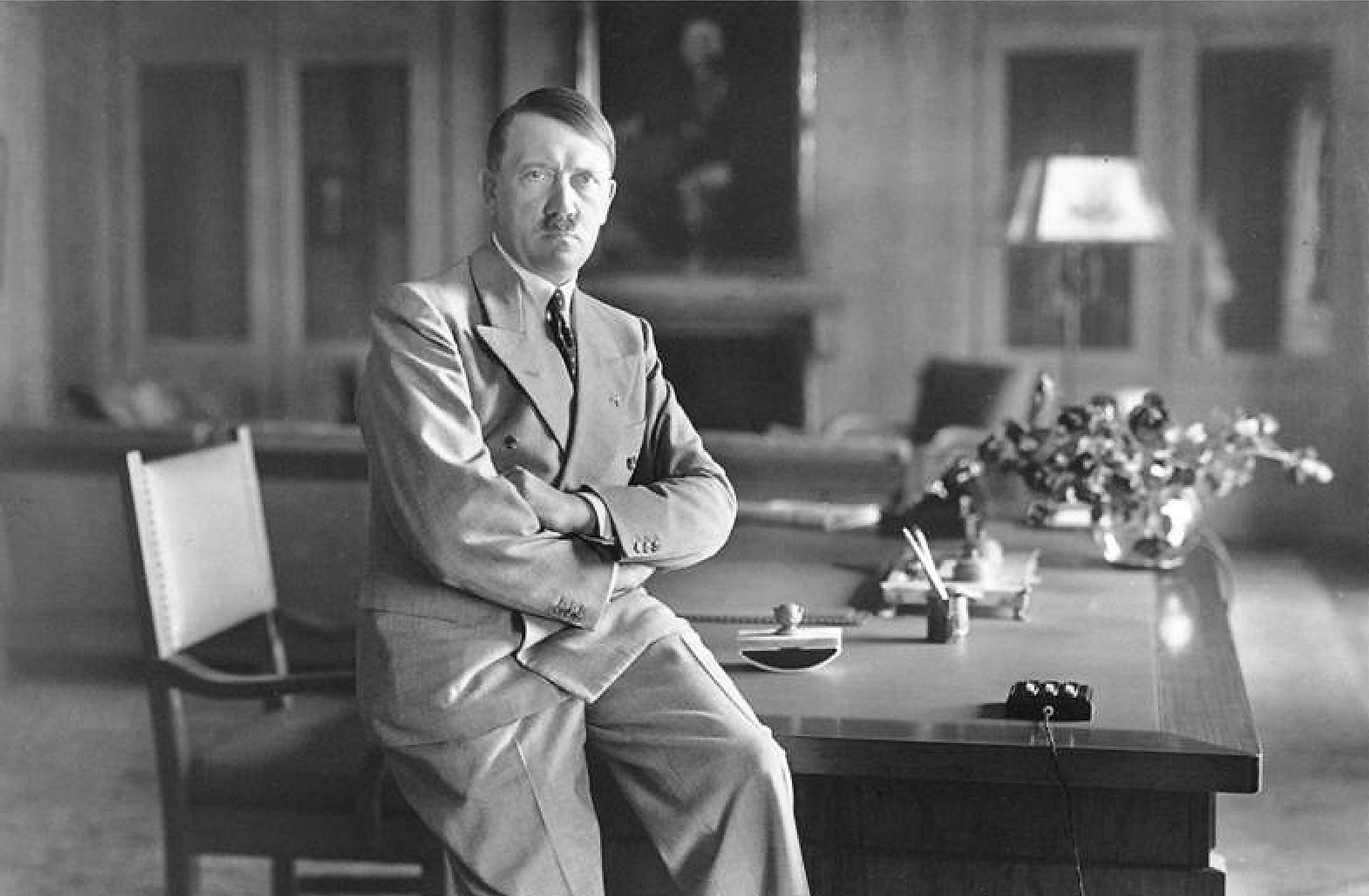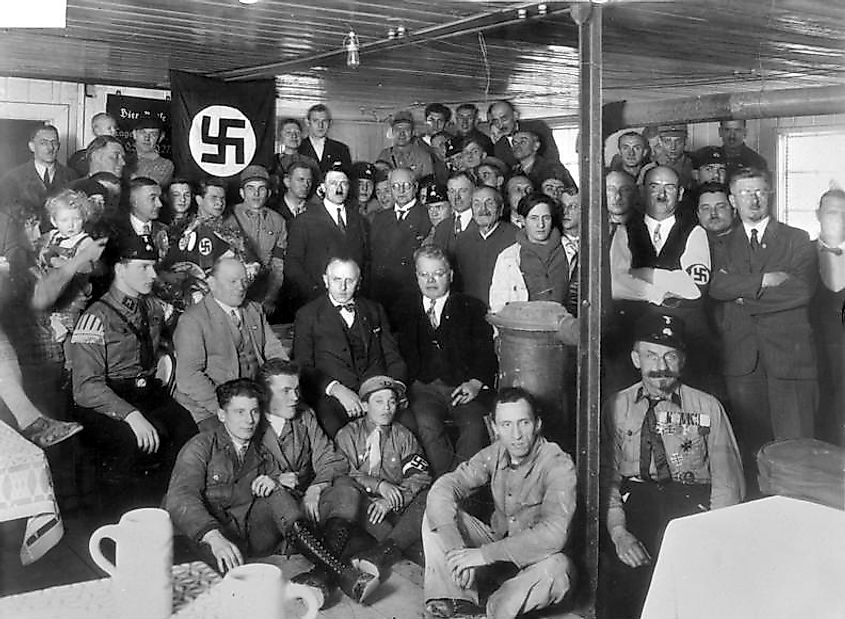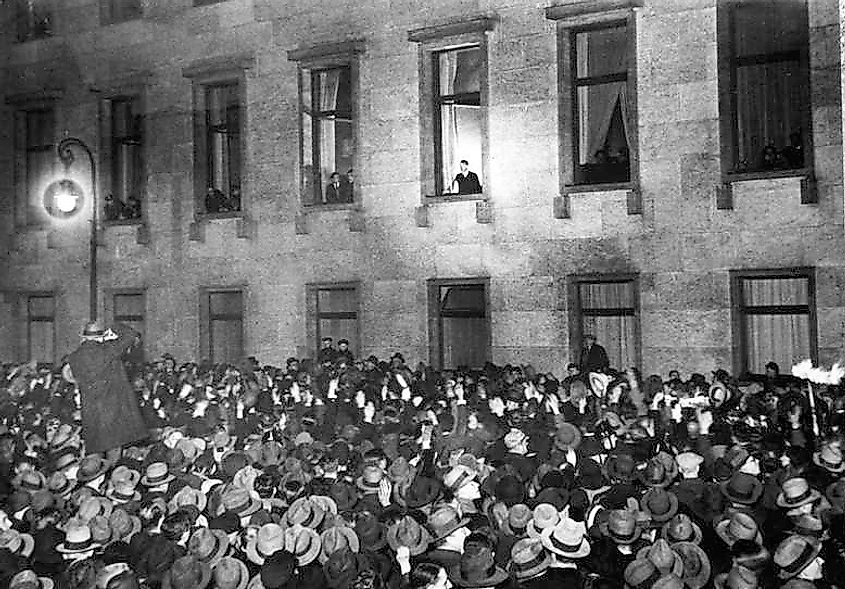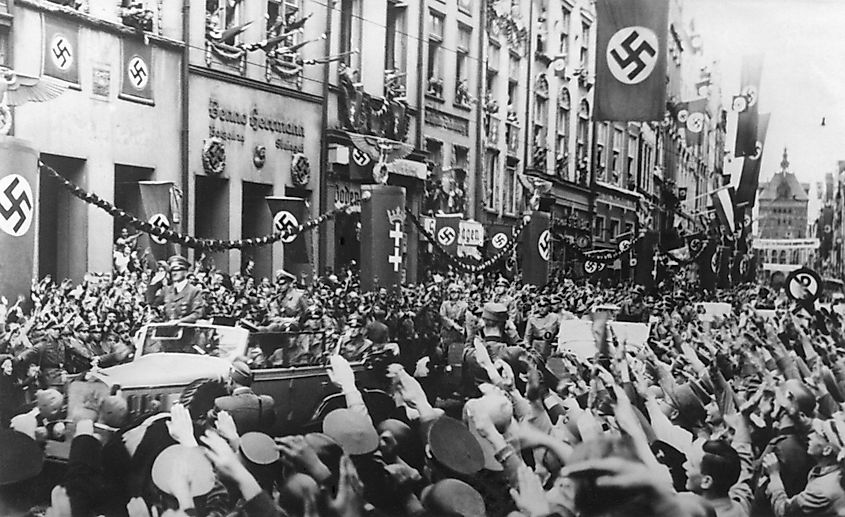
How Adolf Hitler Was Named Chancellor of Germany
The early 1930s saw widespread discontent in Germany. The Great Depression had resulted in mass unemployment, prompting anger toward the Weimar Republic, the democratic system of government that came into being in 1919. This unrest was further amplified by memories of the end of the First World War and the hyperinflation of 1923. Therefore, more and more Germans began to vote for anti-democratic parties, culminating on January 30th, 1933, with Adolf Hitler being named Chancellor of Germany.
The Great Depression and Nazi Electoral Success

The Great Depression began following the Wall Street Crash of October 1929. Germany was hit particularly hard by this economic downtown, and by February 1932, 33% of the working population was unemployed. The Depression was far worse than anything for which the government had planned. Therefore, beginning in 1930, Chancellor Henrich Brüning forced through a series of deeply unpopular budget cuts and austerity measures. This led to significant anger directed toward the government and the entire democratic system.
Such anger benefitted the openly anti-democratic Nazi Party (NSDAP). Thus, in the 1930 Reichstag election, the NSDAP won 107 seats and 6.3 million votes. Adolf Hitler then won 37% of the vote in the presidential elections of 1932, which was followed by the Nazi Party also winning 37% in the Reichstag election that same year. However, in yet another Reichstag election in November 1932, the Nazis lost two million votes. Furthermore, the German Communist Party (KPD) increased its vote share. All this indicated that the Nazis' time in the political spotlight was possibly coming to an end, with Germans looking elsewhere to express their anti-democratic sentiments.
Behind the Scenes Negotiations

Undeterred by this decreased electoral support, Hitler continued to vie for power behind the scenes. In the Weimar Republic (officially named the German Reich), the Chancellor was chosen by the President, who, in 1932 and 1933, was Paul von Hindenburg. Hindenburg, a conservative war hero, disliked Hitler, derogatorily referring to him as the "Austrian corporal". However, other conservative elites thought that they could work with Hitler and possibly use him as a puppet leader. Thus, after months of negotiations and convincing, Hindenburg finally named Hitler Chancellor on January 30th, 1933. To keep him under control, the conservatives made it so Hitler's initial cabinet had only three Nazis: Hitler himself, Wilhelm Frick, and Hermann Goering. But, despite these measures, attempts to moderate the Nazis would prove wildly unsuccessful.
The Torchlight Parade
The Weimar Republic was politically unstable, with new governments often rising and falling within months. Therefore, once becoming Chancellor, Hitler wanted to demonstrate that this was no ordinary transition in power. Hence, on January 30th, 1933, he ordered a torchlight parade through central Berlin. This was accompanied by similar displays in other major German cities. Despite being a significant demonstration of power, with over 60,000 watching, several onlookers noted repeat faces amongst the marching Sturmabteilung (SA) and Schutzstaffel (SS) men. Indeed, the Nazis were walking in circles to make their ranks appear larger. The parades also hardly garnered universal support, with fights breaking out and many onlookers booing. Nonetheless, they also prompted fanatical sentiment. For instance, after witnessing a parade in Hamburg, school teacher Louise Solmitz wrote that she was "drunk with enthusiasm". Moreover, then-15-year-old Melita Maschmann recalled, after witnessing a fight at the Berlin parade, that "the horror it inspired in me was almost imperceptibly spiced with an intoxicating joy".
The Nazis Consolidate Power

The months following January 30th saw the Nazis come to control most of German society. This process began on February 27th when Dutch communist Marinus van der Lubbe set fire to the Reichstag. The following day, to defend against a supposedly imminent communist threat, Hitler passed the Reichstag Fire Decree, a law that suspended civil liberties. Thereafter, at a ceremony in Potsdam celebrating the reopening of the Reichstag on March 21st, Hitler made a conscious attempt to quell his extreme rhetoric, doing so to help win over Germans who feared Nazi excesses. But, this was followed by the passage of the Enabling Act on March 23rd, allowing Hitler to enact laws without the approval of the Reichstag or the President. A similar whiplash-inducing series of events occurred a little over a month later. May 1st was the National Day of Labor, with the Nazis staging massive rallies, speeches, parades, and fireworks to demonstrate their supposed support for German workers. However, the following day, the NSDAP occupied trade unions across the country. Hence, in just three months, the Nazis had taken over most of Germany's key institutions.
Conclusion
Hitler's rise to power represented a culmination of tensions. Years of economic and political instability made many Germans frustrated with the Weimar Republic. Therefore, they turned to the Nazi Party, which openly wanted to destroy German democracy. The NSDAP did precisely that, and less than half a year after coming to power, Hitler's dictatorship was consolidated.











